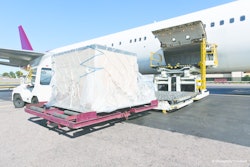Of all the interesting cover stories on our editorial calendar each year, I have to admit that writing the Global Food Chain is one of my favorite. My only regret is that I don’t have more time for research and more editorial pages to devote to this topic.
At the core of the Global Food Chain lies the question: How are we going to feed the world in 2050? It’s a dilemma that’s been raised by international organizations, governments, and leaders in our industry. By some estimates, up to 40 percent of food waste is caused by inefficient logistics, including perishables that are lost to a broken cold chain, damage that occurs to canned and packaged foods, and anything else that can happen from the farm level to the grocery shelf.
Modern day industrial farming, despite its ills (and there are many), has done a pretty incredible job of feeding hundreds of millions around the planet. Yet, it’s not a sustainable model for the future.
But, that’s not the only thing that needs to be examined. What’s required is a holistic approach. For instance, we need to look at individual and cultural behaviors like consumption and diet. And, we need to keep on improving the supply chain.
There are some great minds in our industry—logisticians, academics, scientists, tech geeks, humanitarians, creative thinkers and hard workers—and it’s going to take all of us to solve this one. Personally, the more I learn, the more I am convinced that it’s entirely do-able.
This March issue also includes the first of four market analysis reports this year. Once each quarter, we’ll look at a different global region—Europe, Asia, Latin America, and the Middle East & Africa—to see what opportunities each holds for U.S. exporters in the food sector. Frankly, there has never been a better time to get in the export game. Resources and help abound at the federal and state level. Free trade agreements are opening up new markets and overseas consumers are downright hungry for American food products, from commodities to specialty and gourmet foods.
At the same time, the infrastructure that supports food imports and exports is also expanding. Check out our feature on Ports and the Cold Chain along with our sector report on Air Cargo. Transportation providers are offering new services and routes, while on the economic development side, warehouses and cold storage providers are busy building out their network.
We’ve got our own projects in the works at Food Logistics, too. One of the most exciting is our “Happy Hour With Food Logistics” video chat that we’re getting ready to launch. The idea is to gather a panel together the last Friday of each month to kick around a hot topic in an informal, unscripted and unedited live video session. BYOB, of course.
On the print side, we’re offering two special editions this year. The first, in April, is devoted entirely to Food Safety. Then in July we’ll delve into Sustainability as it pertains to food production practices, to transportation and to energy efficiency in the cold storage environment.
Enjoy the read.


















